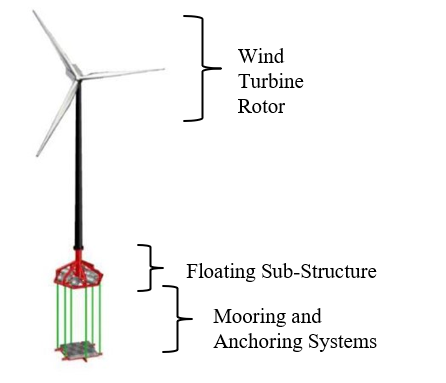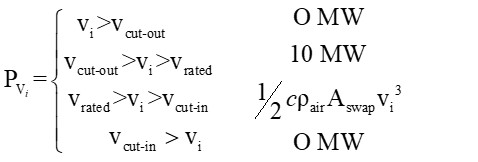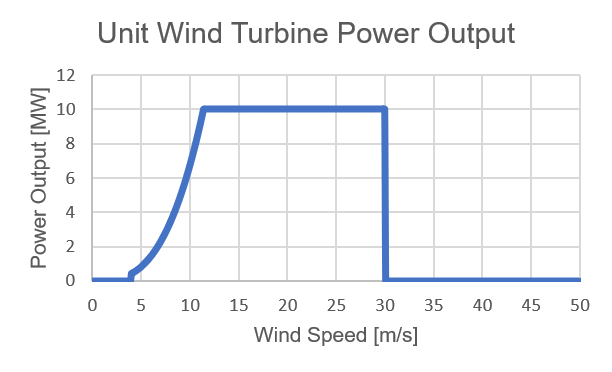Written by: Luca Grispiani
Wind Turbine TLB-FOWT
From a collaboration between the University of Strathclyde and Axis Energy Solution company, it was designed a new concept of Floating Offshore Wind Turbine, shown in the following figure, and composed of 3 main components described below:
Figure: Tension Leg Buoy Floating Wind Turbine.
The wind turbine rotor is summarized by the following technical characteristics:
| Rated Power | 10 | MW |
| Rotor Diameter | 185 | m |
| Wind Speed Cut-in | 4 | m/s |
| Wind Speed Rated Power | 11.5 | m/s |
| Wind Speed Cut.out | 30 | m/s |
The floatability of the whole wind turbine is based on the buoyancy of the substructure. Additionally, the mooring-stabilized TLB systems are known for their low steel mass and stiffness-controlled dynamic response.
The buoy is fixed, by tensioned tethers, to a modular gravity base anchor/foundation on the seabed. It costs less than other floating offshore wind designs and additional benefits are its off-site pre-cast fabrication, a relatively small seabed footprint, no need for piling or jack-up vessels, and a simple decommissioning process. It also offers the potential for the harvest of wave power.
Additionally, the main feature of the mooring and anchoring system of a TLB concept corresponds to the mooring- stabilized restoring force.
Accordingly, the Wind Power relative to i-th wind speed state can be calculated through the equation:
Where c is an adjusting coefficient equal to 0,42 that accounts the energy transformation efficiency, is the air density equal to 1,21 kg/m3, Aswap is the turbine rotor swap area equal to 26’880.25 m2 and vi corresponds to i-th wind speed state between 0.1 and 50 m/s.
All the above considered, the Wind Turbine Power Output is represented by the following graph:
Figure: Power Output trend from a unit wind turbine.
Noteworthy to mention that during the development of this project, the Team has also participated to an open-day at the FloWave Ocean Energy Research Facility, during the execution of a test campaign.

Figure: TLB Wind Turbine during test at Flowave.
References
Slideshow presenting the TLB-FOWT Model www.slideshare.net/CleantechInnovate/axis-tlb-ltd
Video presentation www.youtube.com/watch?v=aSpOHrW_xxA&feature=youtu.be





